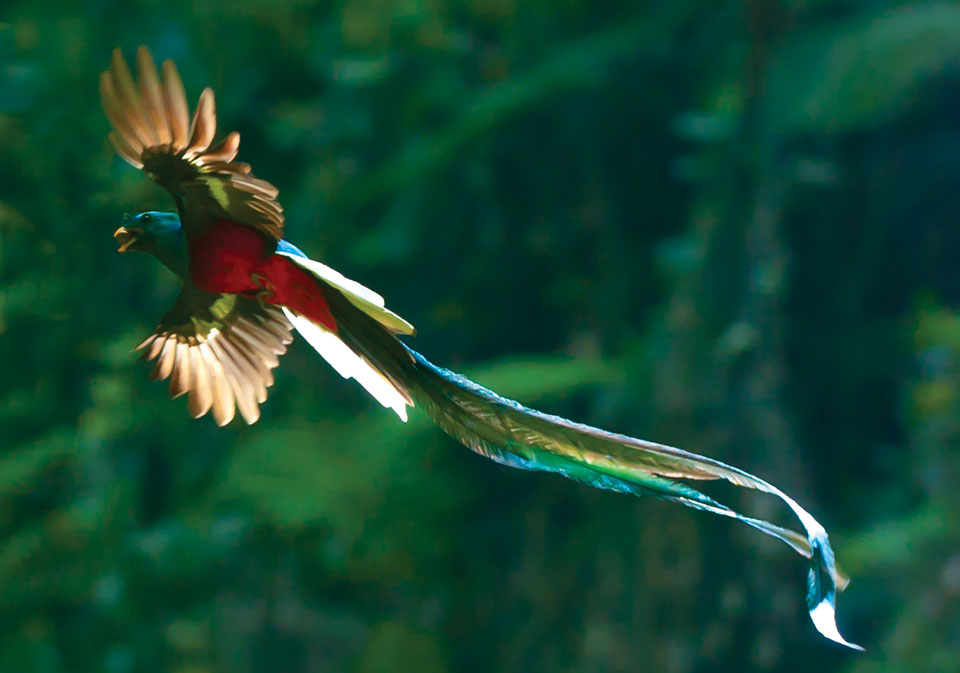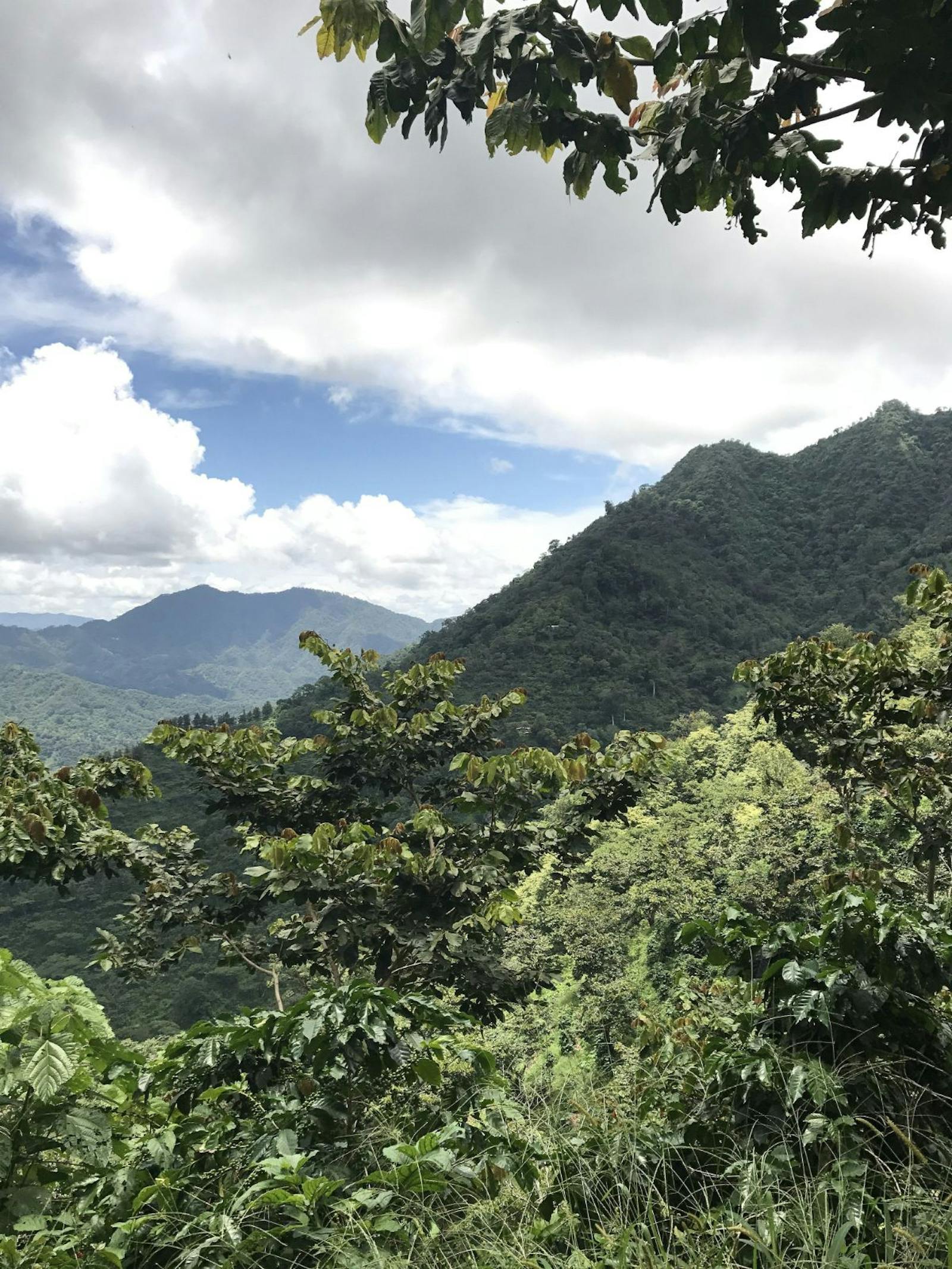Sierra Madre De Chiapas Moist Forests
The ecoregion’s land area is provided in units of 1,000 hectares. The protection goal is the Global Safety Net (GSN1) area for the given ecoregion. The protection level indicates the percentage of the GSN goal that is currently protected on a scale of 0-10.
Bioregion: Central American Mixed Forests (NT25)
Realm: Central America
Ecoregion Size (1000 ha):
1,128
Ecoregion ID:
502
Protection Goal:
53%
Protection Level:
3
States: Guatemala, Mexico, El Salvador
The endangered Franklin’s mushroom-tongued salamander is endemic to the Sierra Madre de Chiapas Moist Forests ecoregion in Mexico and Guatemala. They occur in montane cloud and pine forests, often being arboreal and are not dependent on water to reproduce. They have been spotted in a variety of colour morphs but tend to be brownish with orange spot patterns down the back and sides. The mushroom-shaped tongues, which they are named for, are notoriously effective in catching prey items when projected. The Franklin’s mushroom-tongued salamander suffers from habitat loss following the transformation of forest habitats, as well as subsequent hybridization with their colonizing close relative, the Lincoln's climbing salamander.
.jpg)
The flagship species of the Sierra Madre De Chiapas Moist Forests ecoregion is the Franklin’s mushroom-tongued salamander. Image credit: Courtesy of Sean Michael Rovito, CalPhoto
The species rich and diverse moist forests of Chiapas lie on both sides of the Sierra Madre de Chiapas—a mountain range that runs parallel to the Pacific coast of Mexico, Guatemala, and El Salvado and reaches elevations of 200–1,400 m. The landscape is composed of granitic and metamorphic rocks, with some volcanic rocks associated with the Tacaná Volcano (4,060 m), the highest point in the state of Chiapas. The climate is warm and humid with summer rains.
The area encompassed by the Sierra Madre is one of the wettest in the region with precipitation between 1,500 and 4,000 mm/year. Moist forests in this region grow on deep soils that are rich in organic matter and are associated with calcareous rocks. Dominant trees include mahogany, gumbo-limbo, Terminalia lucida, Virola guatemalensis, Dendropanax arboreus, Ficus crassiuscula, and Aspidosperma megalocarpon. Epiphytes (plants growing on other plants) of the families Bromeliaceae and Orchidaceae grow in abundance in the upper and middle canopy. There are almost no herbaceous plants on the ground due to the shady conditions of the lower canopy strata.
The ecoregion is considered as the northern most range of the Amazonian-like moist forests. Climatic and topographical conditions have favored the ecoregion with over 750 species of plants, 22 amphibians, 63 reptiles, and some 112 mammals. Its approximately 315 species of birds (7 of which are endemic) have established the ecoregion as an IBA (Important Bird Area). Other researchers have concluded the region to be a center of endemism for both butterflies of order Lepidoptera and salamanders of the family Plethodontidae. This ecoregion acts as a natural refuge for many species, as well as important points in the migration of many birds. Important species include the resplendent quetzal, jaguar, tapir, puma and cacomistles.

Resplendent quetzal. Image credit: Creative Commons
Very few portions of the original vegetation in Chiapas moist forests remain intact and yet this ecoregion still holds one of the largest fragments of intact montane forest in Mexico. Several species of forest plants and animals are considered rare and endangered. Federal protection exists in the region in the form of the “El Triunfo” Biosphere Reserve; however, there are not sufficient resources available to appropriately manage the reserve. The Nature Conservancy has placed “El Triunfo” within their National Parks in Peril program which will afford it some protection.
In Mexico, CONABIO has identified a number of terrestrial priority areas within this ecoregion, including El Triunfo-La Encrucijada-Palo Blanco, El Mozotal, Tacaná- Boquerón, and Selva Espinosa Alto Grijalva-Motozintla. Two important bird areas have also been identified within this ecoregion: El Triunfo and El Tacaná.
Fires, extensive logging, agricultural practices, and human settlement threaten one of the richest and most diverse ecosystems of Mexico and Guatemala here. On the long term, demographic explosion and proposed development of the area without regard for their environmental impact may lead the moist forests of Chiapas to complete extinction.
The priority conservation actions for the next decade will be to: 1) encourage sustainable agriculture and cattle practices, especially to reduce slash and burn; 2) incentivize locals to reduce logging through subsidies or awareness programs; and 3) standardize management objectives throughout the ecoregion and increase staffing of protected areas.
Citations
1. Valero, A. Schipper, J. Allnutt, T. 2019. Central America: Southern Mexico, Guatemala, into El Salvador https://www.worldwildlife.org/ecoregions/nt0162 Accessed June 19, 2019.
2. Benitez, H., C. Arizmendi, and L. Marquez. 1999. Base de datos de las AICAS. Mexico: CIPAMEX, CONABIO, FMCN y CCA.
3. Rzedowski, J. 1988. Vegetación de México. Editorial Limusa, México. 431 pp.


